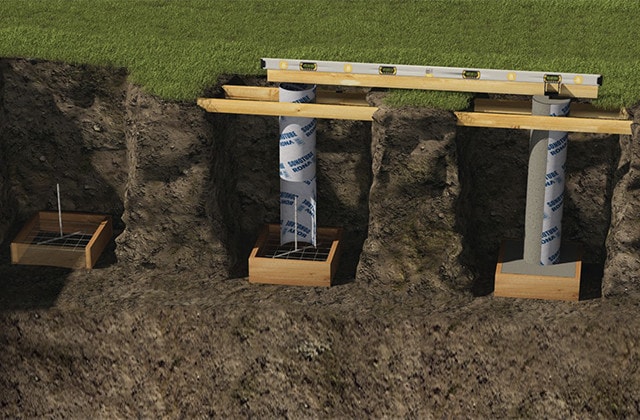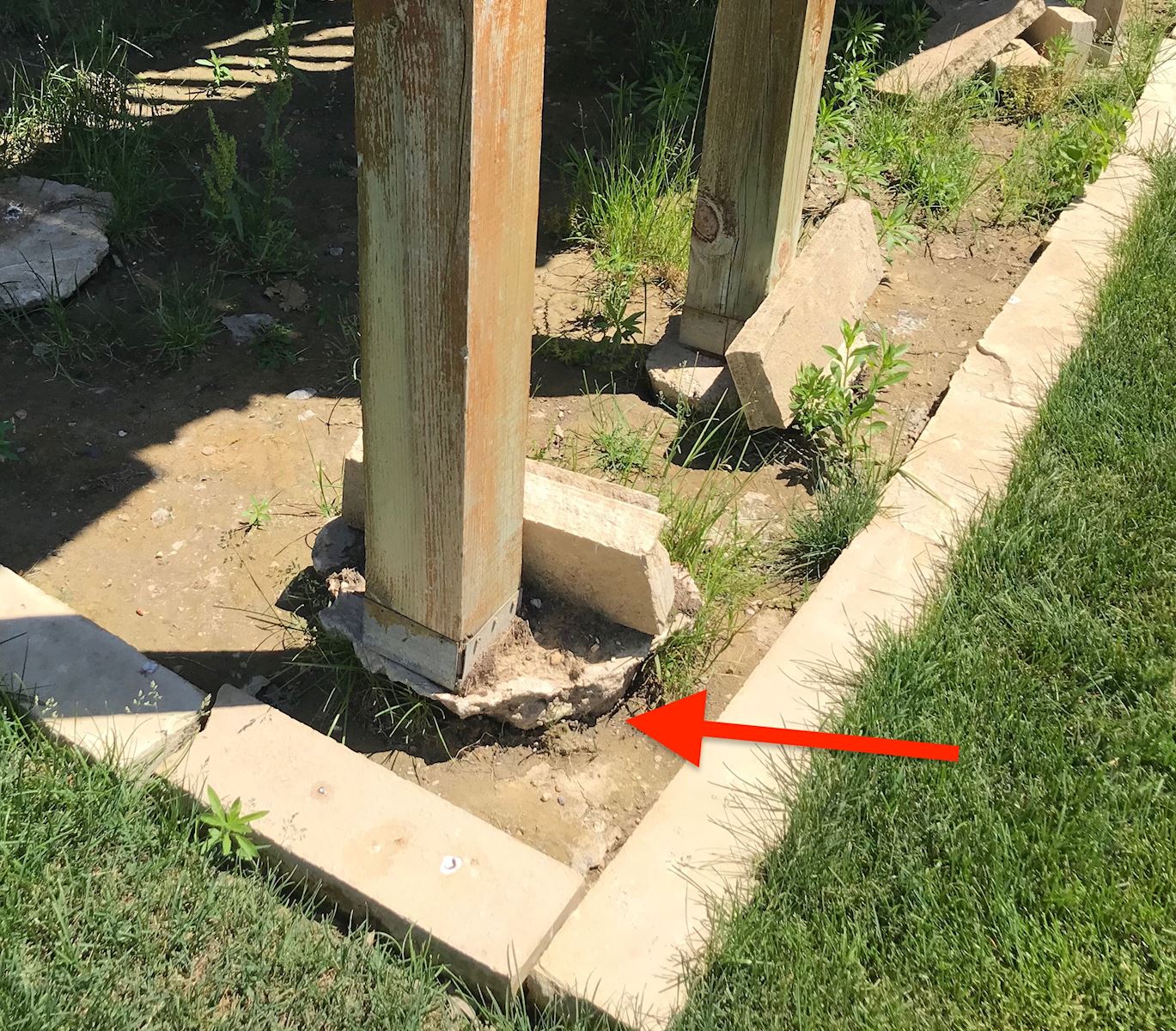Deck Footings 101: Navigating the Essentials for a Steady and Long Lasting Deck
Wiki Article
Make Best Use Of the Life-span of Your Deck With Reliable and Solid Footings
In order to totally make best use of the lifespan of your deck, it is crucial to make certain that it is developed on trusted and solid footings. These footings form the structure of your deck, offering security and assistance, and are often the distinction in between a deck that lasts for decades and one that requires continuous fixings. In this conversation, we will certainly explore the importance of reputable footings, the different types of strong ground products, correct installment methods, and exactly how to preserve and check your deck's footings to stop damage.Relevance of Dependable Grounds
The value of trusted footings can not be overstated when it concerns making best use of the lifespan of your deck. The grounds work as the structure upon which the entire structure rests, supplying security and support. Without a solid footing, the deck is at risk to shifting, sinking, and even collapse, which can substantially reduce its life expectancy and present security dangers.

Selecting the right kind of footing is likewise vital. The most usual types include concrete footings, helical piers, and sonotubes. Factors such as soil conditions, environment, and the size of the deck will establish the most suitable choice. Employing a specialist to assess the soil, style the grounds, and make sure correct installation is highly suggested.
Purchasing reputable grounds might entail added cost and effort upfront, but it is a worthwhile investment that will add to the long-term sturdiness and safety of your deck. By making certain a solid structure, you can enjoy your deck for numerous years to come, knowing that it is built to hold up against the examination of time.
Sorts Of Strong Footing Products
To make sure the stability and longevity of your deck, it is essential to consider the numerous kinds of strong footing products readily available. The choice of footing product is critical as it supplies the required support and stability to endure the weight and tons of the deck structure.One typical and reputable material made use of for deck grounds is concrete. Concrete footings are durable and supply outstanding security.
For areas with inadequate soil problems, such as extensive or loose soils, a ground system that uses steel or composite piers may be chosen. Deck Footings. These piers are driven deep right into the ground to get to secure dirt layers, making sure the security of the deck
In some cases, deck footings can additionally be created making use of treated lumber. Nonetheless, it is important to make sure that the lumber is correctly dealt with to resist rot and decay caused by direct exposure to wetness and pests.
When selecting a ground product for your deck, it is essential to think about variables such as dirt problems, climate, and regional structure codes. Consulting with a professional useful source service provider or structural designer can help establish the most appropriate footing material for your particular deck job.
Appropriate Installment Strategies for Grounds
Taking into consideration the importance of guaranteeing stability and toughness for your deck, it is vital to understand the appropriate setup methods for footings. The success of your deck project relies heavily on the integrity of its foundation, which is why following the correct installation techniques is vital.Most importantly, it is necessary to determine the suitable size and deepness of the grounds based upon the style and tons requirements of your deck. This details can be gotten from developing codes or through consultation with an architectural designer. As a general rule, grounds must be at least 12 inches in size and prolong below the frost line to stop shifting or settling.
As soon as the measurements are established, the following step is excavation. Digging the holes for the footings should be done with precision, making sure they are deep adequate and have a degree bottom. Deck Footings. This will offer a stable base for the grounds
To even more improve the security of the footings, it is advised to make use of a concrete blend with a stamina of at the very least 3,000 psi. This will guarantee the footings can endure the weight and pressures applied by the deck.
During installation, it is very important to keep look at this now the footings level and straightened correctly. This can be accomplished by utilizing a level and string lines to assist the placement of each footing.
Preserving and Checking Your Deck's Grounds
Routine maintenance and extensive assessments are necessary for making certain the long-term security and safety of your deck's footings. In time, grounds can yield to tear and wear, weather, and soil motion, which can compromise their architectural honesty. To take full advantage of the life-span of your deck's grounds, it is vital more info here to execute a regular upkeep routine and conduct complete examinations.
Furthermore, it is vital to check grounds for any type of indications of damages or deterioration. This consists of checking for splits, splits, or collapsing concrete, as well as any kind of indicators of movement or settlement. Any issues need to be dealt with quickly to avoid additional damages and ensure the security of the deck.
Moreover, it is recommended to evaluate the bordering soil for any signs of disintegration or moving. Soil movement can influence the security of the grounds, so it is necessary to attend to any kind of soil-related concerns immediately.
Indications of Footing Damage and Just How to Address Them
Another indicator of footing damages is splitting or collapsing of the concrete footings. If you observe any cracks or damage in the grounds, it is vital to have them examined and repaired by a specialist. Keep in mind, dealing with footing damages promptly can aid ensure the lasting stability and safety of your deck.Conclusion
To conclude, guaranteeing the integrity and stamina of grounds is crucial for optimizing the life expectancy of your deck. By utilizing strong ground materials and correctly installing them, you can protect against damages and maintain the stability of your deck. Regular maintenance and evaluations will certainly likewise help determine any kind of signs of footing damage and permit for timely repair services. Eventually, taking these steps will certainly help preserve the stability and durability of your deck.These grounds develop the foundation of your deck, offering stability and support, and are typically the distinction between a deck that lasts for years and one that needs consistent repairs. In this discussion, we will check out the importance of trusted footings, the various kinds of strong ground materials, proper installation strategies, and exactly how to preserve and inspect your deck's footings to protect against damage.Regular upkeep and thorough evaluations are necessary for ensuring the long-lasting security and safety and security of your deck's footings. Keep in mind, attending to footing damages quickly can help make sure the long-term security and safety of your deck.
By making use of strong ground materials and appropriately installing them, you can stop damage and preserve the stability of your deck.
Report this wiki page